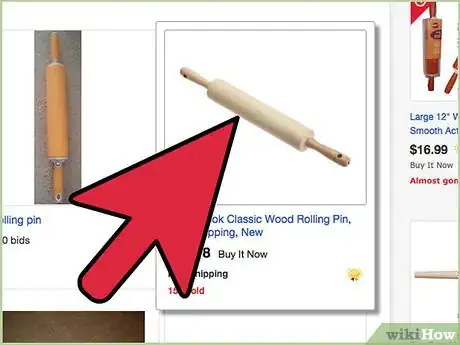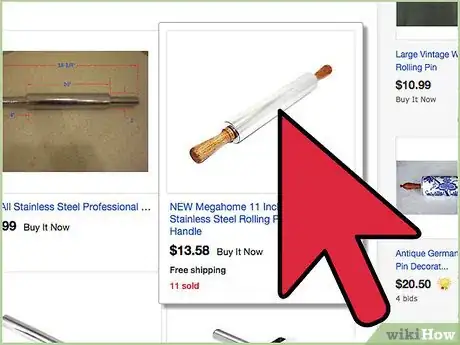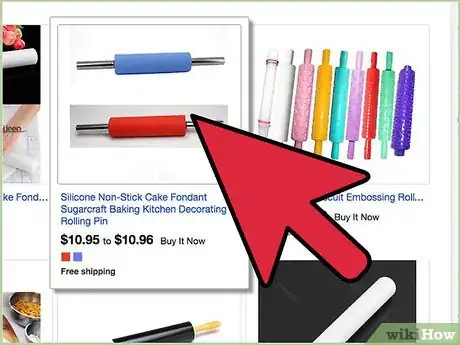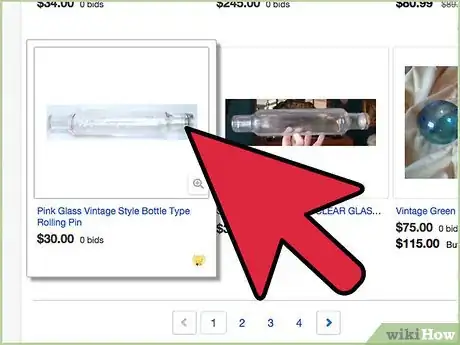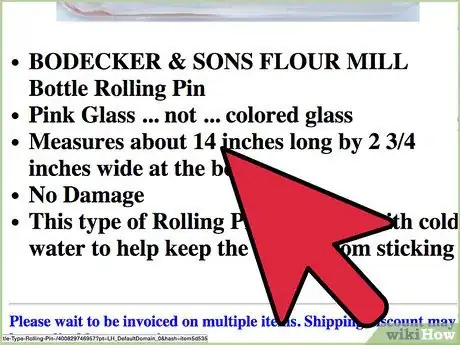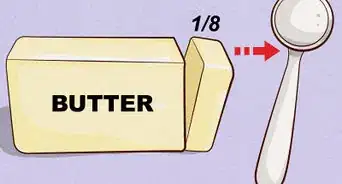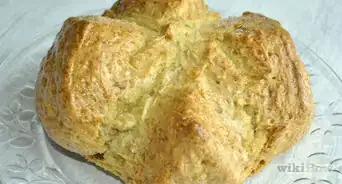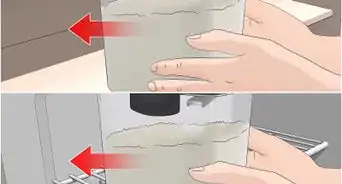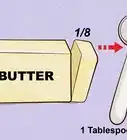X
wikiHow is a “wiki,” similar to Wikipedia, which means that many of our articles are co-written by multiple authors. To create this article, volunteer authors worked to edit and improve it over time.
This article has been viewed 122,079 times.
Learn more...
Rolling pins can become both an obsession for the kitchen tool collector and a source of great pride for the cook who delights in baking. Rolling pins are an essential baking tool and they're frequently displayed in the kitchen as a work of art in themselves.
Choosing the right rolling pin for your needs isn't as straightforward as it might seem; there are different types and materials, each with their own good points.
Steps
-
1Choose between a rod or a roller. A rod (also known as a French rolling pin) is one piece of wood that is either a straight dowel, tapered from the center, or tapered at the ends. The roller is a round cylinder of wood attached to an internal axle, with two handles at the end to push on to make it roll. Both have a different feel and you may prefer one over the other, or even find that they work well for different tasks in the kitchen. The only way to know is to try one of each style.
- The rod is easier on your hands and wrists. You place your palm on each end of it and roll using even pressure across the dough. On the downside, your hands touch the dough; some people enjoy this "dough feel" as a technique in itself, but touching too much risks heating the dough from your hand warmth, so you need to work quickly. The rod is usually cheaper than a rolling pin and it has another benefit of not having any crevices which could attract random pieces of dough.
- The rolling pin is used by holding the handles and rolling the cylinder across the dough. The downside is that you need to place more force on the dough and as a result, the dough is not stretched as evenly as with a rod because you're exerting pressure in uneven ways.
- Some rolling pins are one piece with handles, a cross between both types of rolling pins.
-
2Consider a wooden rolling pin. Wooden rolling pins are traditional and can be made from a variety of wood types, including fragrant wood (such as huon pine from Tasmania). The larger the wooden rolling pin, the heavier it will be (see "Tips" for benefits of weight).
- Many wooden rolling pins stick to the dough. This can be a real hassle, especially if adding a lot of flour makes the pastry over-floured. However, some woods are better than others; look for an oilier wood that will not stick as much.
- A wooden roll cannot be chilled for pastry that needs to stay really cool.
- Wooden rolling pins can mark more easily than other types of rolling pins.
Advertisement -
3Check out marble rolling pins. These rolling pins are heavy but they remain cold (especially if chilled first) and therefore don't transfer any heat to the dough. On the downside, while these rolling pins are marvelous to look at, they are very heavy and can really squash delicate pastry. If you do get one, be sure its internal axle is very solidly attached and not likely to wobble off course.
- Marble is prone to chipping. It is usually purchased with a wooden stand supplied; be sure to always use this stand when chilling and storing the rolling pin.
-
4Try a stainless steel rolling pin. These look very "chef" and hold cold well. They are always easy to clean and they are usually very well balanced. On the downside, they're heavy and they may feel too cold to the touch.
- Some metallic rolling pins can be filled with water in the same manner as glass ones.
-
5Look at non-stick rolling pins. A non-stick rolling surface will make it easier to roll over the dough. There are plastic, silicone, and other non-stick surface rolling pins. Check that it can be chilled if needed and that its surface is safe. The beauty of silicone rolling pins is that they don't stick and they're really easy to clean.
-
6Check out glass rolling pins. Glass rolling pins are made so that cold water can be poured inside them to keep them chilled for rolling the dough.
- Read the instructions accompanying a glass rolling pin for water temperature. If the water is too cold, the rolling pin will sweat and the liquid will be transferred to the dough.
-
7Decide on a suitable length. The length won't be such an issue unless you're making wide sheets of dough, such as for pasta. In this case, you need a long rolling pin, longer than the average sizes.
- The standard length for a French rolling pin is 20", while 12" (30cm) is the standard for wooden, metallic rolling pins. Marble rolling pins tend to be 10"(25cm) in length. Rolling pins longer than 32" can cause bowing.
- Don't choose a longer one for normal dough work; it will be too unwieldy to work with.
-
8Check for the following things before you're satisfied with a choice:
- The handling feels good to you and it's easy to use
- The balance feels right
- The surface won't stick to the dough or heat it up
- It's easy to clean.
-
9Consider having several rolling pins of different kinds. This gives you the opportunity to change rolling pins between baking recipes and to show them off on display.
- There are also specialty rolling pins that imprint decorative designs. These are for the serious baker with a specific design in mind, such as marzipan, pasta, shortbread, gingerbread, fondant, etc.
Advertisement
Community Q&A
-
QuestionWhat is a double rolling pin used for?
 Community AnswerA double rolling pin is beneficial for delicate pastry -- since you don't have to make as many rolls over the pastry dough, the dough ends up being lighter and more flaky in texture. Usually reserved for the most fiddly and delicate of pastry making, for the advanced pastry makers.
Community AnswerA double rolling pin is beneficial for delicate pastry -- since you don't have to make as many rolls over the pastry dough, the dough ends up being lighter and more flaky in texture. Usually reserved for the most fiddly and delicate of pastry making, for the advanced pastry makers. -
QuestionDo I have to season a new wooden rolling pin?
 Community AnswerNo, you don't need to. Just be sure to wash before using.
Community AnswerNo, you don't need to. Just be sure to wash before using. -
QuestionIs cedar a good wood for rolling pins?
 Community AnswerIt depends on what you're cooking, but usually it is fine.
Community AnswerIt depends on what you're cooking, but usually it is fine.
Advertisement
Warnings
- Most rolling pins should not be placed in the dishwasher, ever. Wash them by hand by wiping with a damp cloth and air-drying. For more modern materials, read the manufacturer's instructions.⧼thumbs_response⧽
Advertisement
Things You'll Need
- Quality bakeware retailer
- Rolling pins
- Stand or display for rolling pin storage
References
- http://danamccauley.wordpress.com/2009/03/13/choosing-a-rolling-pin/ – research source
About This Article
Advertisement

